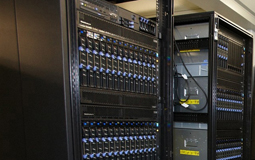Leasing Benefits
Leasing is most often cited as a preferred financing mechanism because of its potential tax advantages over other forms of financing. For example, if a lease is structured in a certain manner the lease payments, unlike loan payments, can be expensed in the period in which they are paid as a general operating cost. For most lessees this results in a lower after tax cost for the credit which results in a lower tax liability when compared to depreciating the equipment cost and expensing the interest portion of the loan payments. Expensing the full payment is also easier to account for on a company's financial statements because only one general ledger entry is necessary to "book" the expense, instead of two entries necessary to account for loan payments. By utilizing leasing, a company can finance 100% of the equipment cost. Since there are no down payments, security deposits, or origination fees to be paid a customer can utilize cash and other credit facilities to manage short-term credit needs and generate a return on these assets in excess of the cost of the term and financing associated with the acquisition of the capital asset. This same rationale justifies leasing to those companies that can afford to pay cash for equipment. If they earn a return on assets retained in their business that is in excess of their cost of capital, it would be warranted to consider a proposal from us. Leasing allows a company to acquire needed equipment today, without a large capital outlay from the current operating budget. If a customer requires new equipment but hasn't allocated the resources necessary to acquire it, we can assist in structuring a viable financing option that allows the customer to acquire the equipment and maintain their budgetary integrity. Our lease payments are fixed for the term of the lease. When adjusted for future inflation the net cost of the lease will actually decrease while gross revenues increase. Many financial analysts acknowledge the benefits of matching the useful life of an asset with the liability associated with that asset's acquisition. By matching the lease term to the useful life of the equipment a company can match their payment obligations to the period in which the equipment will produce revenues, instead of paying for the equipment "up front" and mismatching the lump sum payment for the equipment with the revenue stream generated by that equipment.
Leasing Advantages:
- Acts as a hedge against inflation
- Preserves other credit facilities
- 100% financing Overcomes budgetary restrictions
- Potential tax advantages
- Conserves working capital


